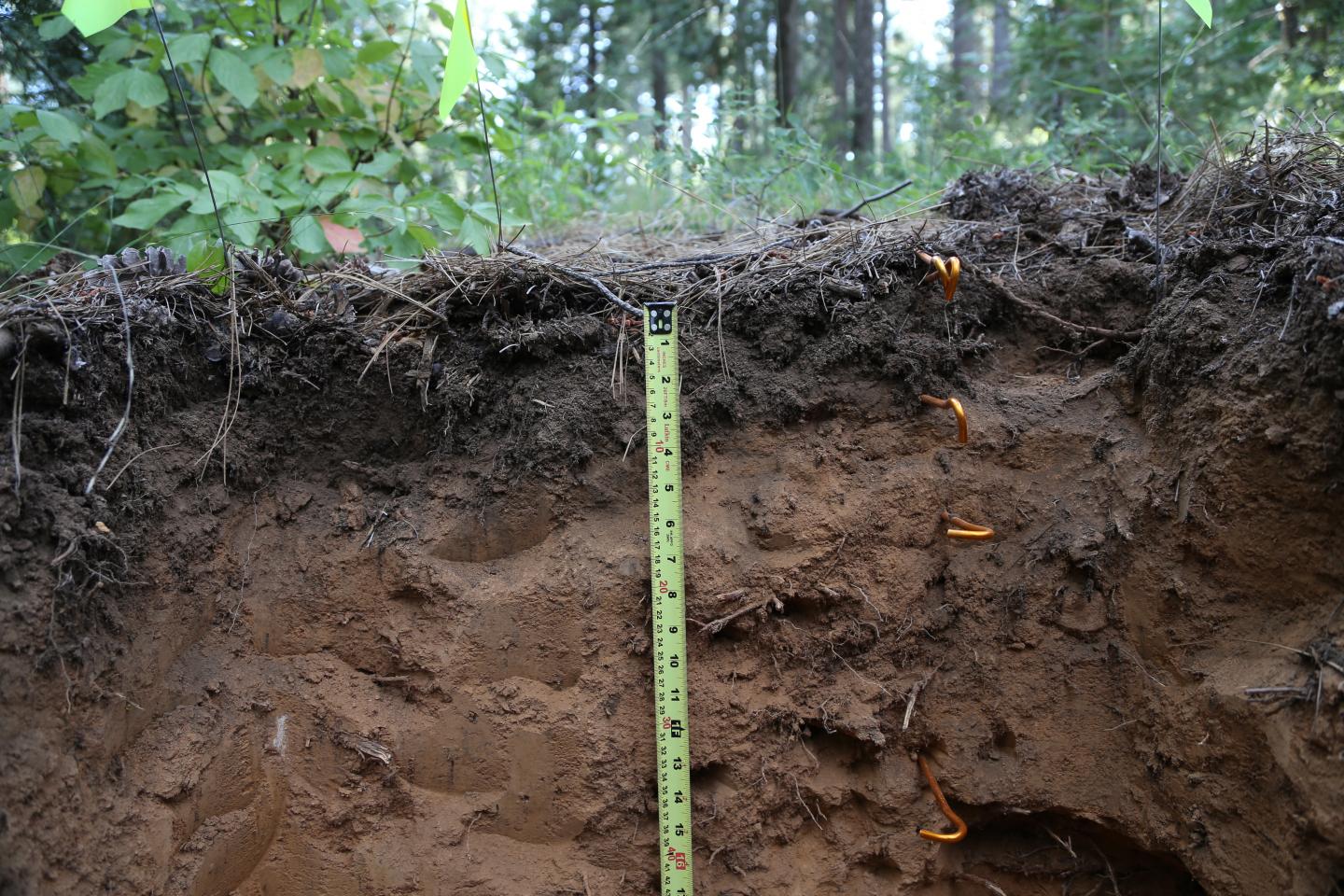
Credit: J. Bryan Curtis
HANOVER, N.H. – September 11, 2018 – Energy-starved microbes may be the force that causes huge amounts of carbon to be stored in deep soils, according to a Dartmouth College study. The research finds that less food energy at depth makes it more difficult to decompose deposits of organic carbon, creating an underground storehouse for the climate-destabilizing chemical element.
The study, published in Soil Biology and Biochemistry, outlines the conditions that underlie whether deep soil acts as a source or a sink for carbon.
The fate of deep soil carbon is of major consequence to researchers studying climate change. It is estimated that 2400 gigatons of carbon is stored in soil, with two-thirds of that lying below the 20 cm depth. The amount of deep soil carbon alone is about double the amount of carbon in the form of carbon dioxide that exists in the Earth's atmosphere.
If decomposition rates increase as a result of climate change, then carbon stored in deep soils will be released into the atmosphere as the greenhouse gas carbon dioxide. The research tested how decomposition changes with soil depth to help predict whether deep soil carbon would be vulnerable to such climate-induced changes.
"Deep soil carbon is a really big deal for understanding the future of climate change," said Caitlin Hicks Pries, an assistant professor of biology at Dartmouth. "Understanding the forces that cause that much carbon and all of its greenhouse gas potential to be stored underground helps us predict what our future climate will look like."
Soil organic carbon comes from the decomposition of dead plants and can remain in soil for thousands of years. The research team set out to see how root litter decomposes at different depths to understand why some deep soil carbon can be stored for such a long period of time and why other carbon is released into the atmosphere.
The team incubated roots at depths ranging from 15 cm to 95 cm in an 80-year-old stand of conifer trees in the foothills of California's Sierra Nevada mountains. According to the study, the loss of root litter carbon during the first six months was similar across all depths. However, after 30 months, carbon loss was significantly slower at the greater depths.
The team found that the smaller amount of energy that is readily-available to microbes in the form of dissolved carbon could be the reason for slower decomposition. As a result of the slower decomposition rates, carbon is more likely to be stored long-term.
"Live fine roots feed the soil with substrates that are like candy for microbes. The lack of this energy source at depth denies microbes the energy they need to efficiently decompose dead roots," said Hicks Pries.
To conduct the study, the team also relied on the Carbon Organisms Rhizosphere and Protection in the Soil Environment model developed at Princeton University and the University of California, Merced. Known as CORPSE, the program predicts microbial activity and allows researchers to see how the amount of available energy translates into biological processes to decompose roots.
CORPSE showed that decomposition proceeds relatively quickly when food energy is available, but that without an external source of energy, microbes at depth lose the ability to decompose roots.
"CORPSE allows us to focus on the role of living things in the decomposition process when studying soil carbon, rather than just looking at the material that's being decomposed," said Benjamin Sulman, a project scientist at the University of California, Merced. "This study shows why it's important to include those biological processes in the computer models we use to make predictions about how ecosystems and climate will change in the future."
While the findings don't predict how much carbon will be released from deep soil in a given amount of time, the results do allow researchers to understand how a change in climatic conditions could impact the fate of deep soil carbon.
For example, increased rainfall could transport more energy in the form of dissolved organic carbon to deeper soils and result in more carbon released into the atmosphere. A change in dominant plants to species with deep-growing fine roots, could also force more carbon into atmosphere, whereas plants with coarse roots could have the reverse impact.
"We should be concerned because as temperatures warm, this deep soil organic carbon has the potential to be released as carbon dioxide forcing a positive feedback to climate change," said Hicks Pries.
According to the paper, the processes controlling the cycling of deep soil organic carbon have received little attention even though over half of the world's soil carbon is stored below 20 cm.
"This approach misses the huge amount of carbon that resides in deep soil," said Hicks Pries.
The research indicates that moisture level and temperature do not directly impact decomposition rates within deep soil and that microbial abundance likely does not either. Lower nitrogen levels could be a factor, but further testing would be needed.
###
Media Contact
David Hirsch
[email protected]
@dartmouth
http://www.dartmouth.edu
Related Journal Article
http://dx.doi.org/10.1016/j.soilbio.2018.07.002





